
- 12302 Broken Arrow St. [HAR]

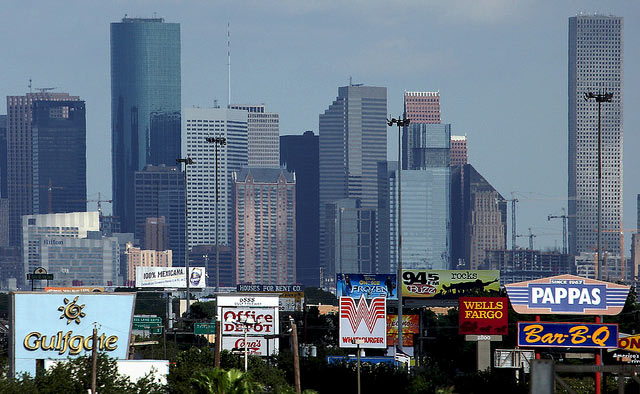
In the wake of a multi-year legal tiff between TxDOT and an Austin-based real estate company over a freestanding Ron Paul 2012 sign outside of an erotica shop on Hwy. 71, a district appeals court has just struck down central parts of the Texas Highway Beautification Act, Dug Begley reports today. The ruling may have eventual implications for city makeover enthusiast Scenic Houston’s long-term de-billboarding quest, and comes right on the heels of the announcement last week that an additional 13 signs around Houston would be coming down.
DOCUMENTING HOUSTON’S TOWNHOUSIFICATION, ONE TWEET AT A TIME 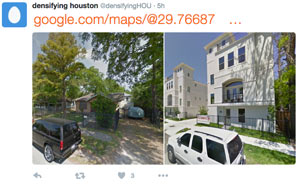 While you’re waiting for Kuukibot’s polite but insistent stream of air toxics tweets to come back, another Houston-obsessed account has just hit the Twittersphere — this one documenting the city’s infill development, as evidenced by daily before-and-after shots pulled from Google Streetview (like the 2-house-t0-7-townhome transition shown above, from near the intersection of Gibson and Snover streets in Brunner).  The account’s Philadelphia-based author (who’s looking for submissions, by the way) points to the 1999 changes in minimum lot size requirements as the catalyst for the subsequent waves of tightly-packed townhouse do-overs in previously large-lot neighborhoods around town, as explained by Daniel Hertz earlier this summer: Hertz writes that  the decision to allow lots as small as 1,400 sq.ft. within the Inner Loop (a decree later expanded city-wide in 2013) allowed the building of way more housing stock in the city’s core without a switch to multifamily-style buildings. “An important research project in the coming years ,” Hertz notes, “will be to see if Houston’s willingness to allow more housing—and especially missing middle housing—in the center of a growing metropolitan area can reduce the growth of housing prices and keep neighborhoods more diverse and affordable than they would otherwise be.” [City Observatory] Screenshot of Densifying Houston tweet: @densifyingHOU
While you’re waiting for Kuukibot’s polite but insistent stream of air toxics tweets to come back, another Houston-obsessed account has just hit the Twittersphere — this one documenting the city’s infill development, as evidenced by daily before-and-after shots pulled from Google Streetview (like the 2-house-t0-7-townhome transition shown above, from near the intersection of Gibson and Snover streets in Brunner).  The account’s Philadelphia-based author (who’s looking for submissions, by the way) points to the 1999 changes in minimum lot size requirements as the catalyst for the subsequent waves of tightly-packed townhouse do-overs in previously large-lot neighborhoods around town, as explained by Daniel Hertz earlier this summer: Hertz writes that  the decision to allow lots as small as 1,400 sq.ft. within the Inner Loop (a decree later expanded city-wide in 2013) allowed the building of way more housing stock in the city’s core without a switch to multifamily-style buildings. “An important research project in the coming years ,” Hertz notes, “will be to see if Houston’s willingness to allow more housing—and especially missing middle housing—in the center of a growing metropolitan area can reduce the growth of housing prices and keep neighborhoods more diverse and affordable than they would otherwise be.” [City Observatory] Screenshot of Densifying Houston tweet: @densifyingHOU
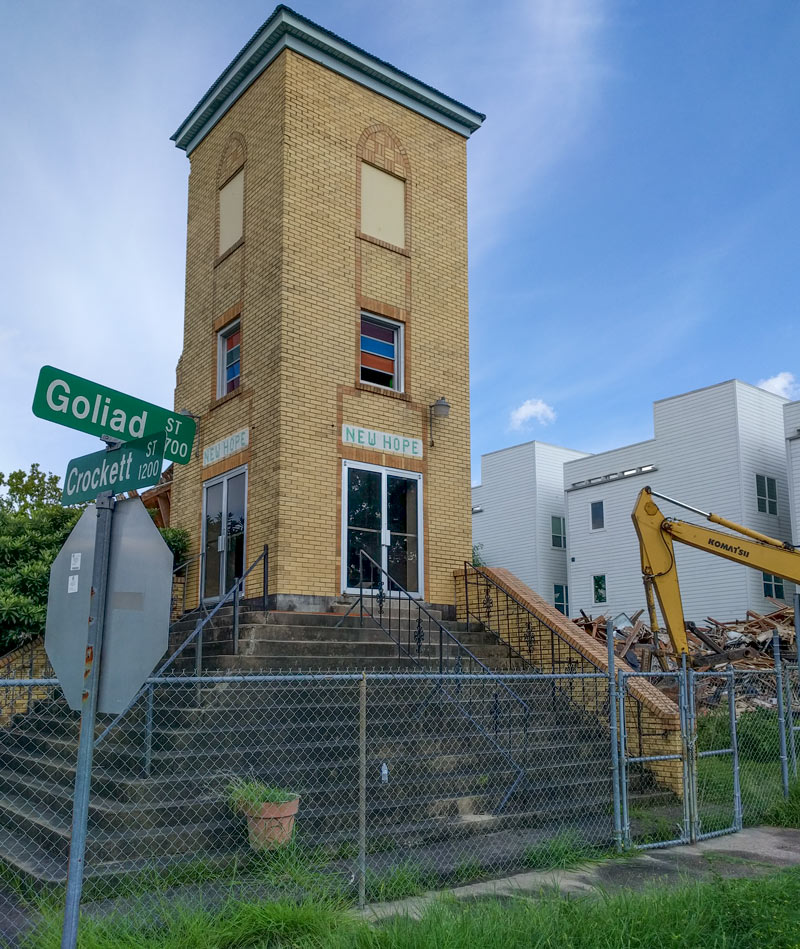
The brutal Sunday scene at the former New Hope Missionary Baptist Church was caught by a reader on Goliad St. in First Ward this weekend.  The 1940s structure is making way for new CitySide townhomes; 3 lots in the new 7-way split will face Goliad, while the other 4 keep watch on Crockett St. Here’s a look from Crockett at building’s insides spilling out under the guiding influence of that excavator, and of the corner tower’s last stand:
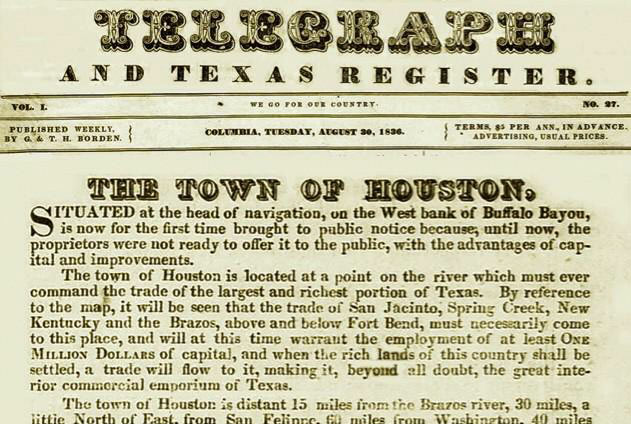
It’s that time again — Houston’s birthday celebration, observed traditionally on the anniversary of the publication of the Allen brothers’ newspaper ads offering land for sale in the area in 1836. Among the more eyebrow-worthy claims put forward by the founders: that the “beautifully-elevated” area (depicted nestled amid a clutch of towering hills) was already the site of regular steamboat traffic (the Laura wouldn’t make the first steamboat run up the sandy twists of Buffalo Bayou to Allen’s Landing until the following year), and that the area “[enjoys] the sea breeze in all its freshness” and is “well-watered” (that part, at least, is likely undisputed).
The ad text also claims that “Nature appears to have designated this place for the future seat of Government,” though Lisa Gray suggests this morning that a few well-timed gifts to members of the newly-minted Texas Legislature may have been responsible as well. Gray writes that the city hosted the Texas government from 1837 until the legislators, tired of the heat and mosquitoes, voted to move elsewhere in 1839.
Here’s the ad in its entirety, as it appeared 180 years ago today in the Telegraph and Texas Register:
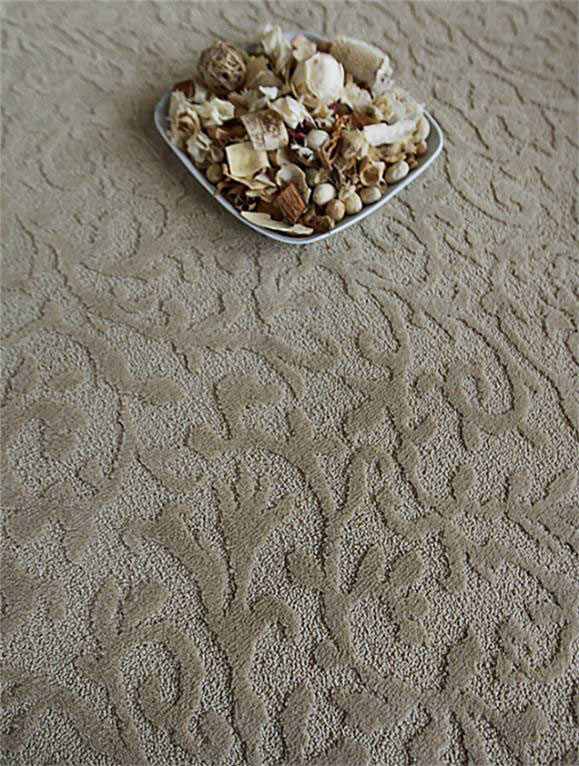
The larger the dot in the interactive map above, the more frequently the surrounding ZIP code deals with sewage overflows, per to the city’s tally of sewage spills between 2009 and 2014. The map, put together by Rachael Gleason with data prepped by John Harden and Mike Morris, goes along with Morris’s update in the Chronicle this weekend on the city of Houston’s ongoing negotiations with the EPA over what to do about the city’s sewage-related water quality issues, with the estimated cost of required infrastructure upgrades and education programs on the horizon currently hanging out in the neighborhood of $5 billion dollars.
The Chronicle’s analysis also notes that most of the areas with above-average sewage spill rates are home to above-average poverty rates, as well as above-average proportions of black and Hispanic residents than the city as a whole. The map above allows readers to superimpose the spill numbers over each ZIP code’s median income and poverty rate (you’ll have to look elsewhere for maps backing up the other claim, though). Another map released earlier this summer pinpoints more precisely the spots where the sewage flows most freely — areas in purple below have seen a minimum of 45 documented sewage spills in the 5-year data period:
COMMENT OF THE DAY: CONFESSIONS OF A RECOVERING MCMANSION JUNKIE 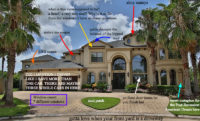 “There’s a mania that afflicts home-buyers. I was under the influence once. We had the money and the growing family and longed for a sort of rock to pin our hopes to . . .  (Granted, this was years ago, before the Tuscan Incursion.) The affliction is a cross between beer goggles and the Stockholm Syndrome: the falling-in-love with some ideal future life promised by a house and the suspension of critical thinking. Developers know how to woo with bike paths and landscaping — builders do it with niches, shutters and mantels, etc. The buyer really, desperately wants to see their stuff and their kiddos in that scene.” [movocelot, commenting on And Now, an Illustrated Series of Detailed Rants About McMansions]
“There’s a mania that afflicts home-buyers. I was under the influence once. We had the money and the growing family and longed for a sort of rock to pin our hopes to . . .  (Granted, this was years ago, before the Tuscan Incursion.) The affliction is a cross between beer goggles and the Stockholm Syndrome: the falling-in-love with some ideal future life promised by a house and the suspension of critical thinking. Developers know how to woo with bike paths and landscaping — builders do it with niches, shutters and mantels, etc. The buyer really, desperately wants to see their stuff and their kiddos in that scene.” [movocelot, commenting on And Now, an Illustrated Series of Detailed Rants About McMansions]
FINDING THE RIGHT WORDS TO TALK THROUGH HOUSTON’S RELATIONSHIP WITH SIDEWALKS 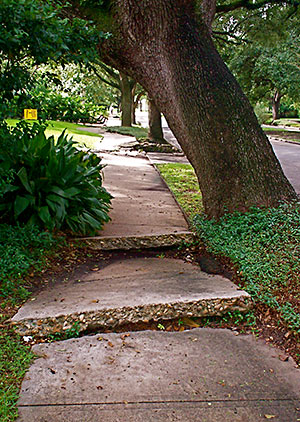 Taking together a recent rash of of essays complaining about Houston’s walkability, public transit, and sidewalk situation, Joe Cortwright over at City Observatory offers some thoughts on why it might be harder for city planners to buff up the city’s walking infrastructure than focus on its car standards: planners, both locally and nation-wide, don’t have as many ways to measure unpleasant walking experiences, or sufficient language to describe them. Cortwright writes that the anecdotes and narratives put forth by Houston’s frustrated would-be walkers are “rich and compelling in their detail, but lack the technocratic throw-weight of quantifiable statistics or industry standards to drive different policies and investments in our current planning system. [ . . . But] this isn’t simply a matter of somehow instrumenting bike riders and pedestrians with GPS and communication devices so they are as tech-enabled as vehicles. An exacting count of existing patterns of activity will only further enshrine a status quo where cars are dominant. For example, perfectly instrumented count of pedestrians, bicycles, cars in Houston would show — correctly — little to no bike or pedestrian activity. And no amount of calculation of vehicle flows will reveal whether a city is providing a high quality of life for its residents, much less meeting their desires for the kinds of places they really want to live in.” [City Observatory] Photo: Flickr userbpawlik
Taking together a recent rash of of essays complaining about Houston’s walkability, public transit, and sidewalk situation, Joe Cortwright over at City Observatory offers some thoughts on why it might be harder for city planners to buff up the city’s walking infrastructure than focus on its car standards: planners, both locally and nation-wide, don’t have as many ways to measure unpleasant walking experiences, or sufficient language to describe them. Cortwright writes that the anecdotes and narratives put forth by Houston’s frustrated would-be walkers are “rich and compelling in their detail, but lack the technocratic throw-weight of quantifiable statistics or industry standards to drive different policies and investments in our current planning system. [ . . . But] this isn’t simply a matter of somehow instrumenting bike riders and pedestrians with GPS and communication devices so they are as tech-enabled as vehicles. An exacting count of existing patterns of activity will only further enshrine a status quo where cars are dominant. For example, perfectly instrumented count of pedestrians, bicycles, cars in Houston would show — correctly — little to no bike or pedestrian activity. And no amount of calculation of vehicle flows will reveal whether a city is providing a high quality of life for its residents, much less meeting their desires for the kinds of places they really want to live in.” [City Observatory] Photo: Flickr userbpawlik
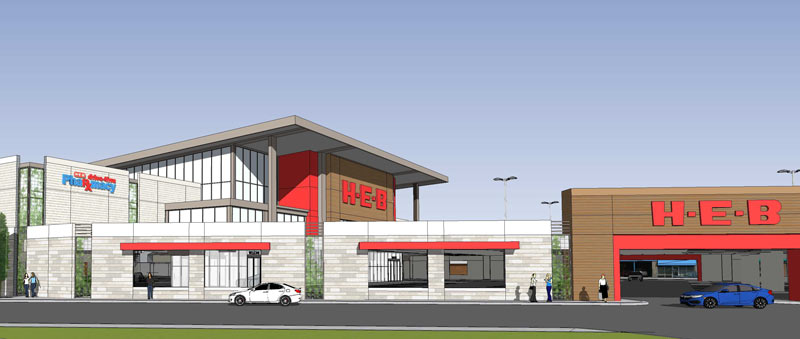
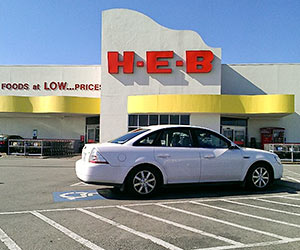 Drawings submitted this month to the city of Bellaire for approval outline how H-E-B plans to fit 6-acres of parking and replacement store onto its 3-acre lot at the intersection of Bissonnet and Cedar streets. The renderings and accompanying documentation show a roughly 75,000-sq.-ft. single-story store footprint sitting on the upper level of the planned structure, with an acre-plus of parking out front atop the all-parking lower level. The drawing at the top shows the would-be view of the design from Bissonnet (near the late-50’s supermarket building currently occupied by Randall’s); below are the proposed layouts of the upper and lower story once the existing H-E-B (also pictured above) and its retail strip friends are cleared of the way:
Drawings submitted this month to the city of Bellaire for approval outline how H-E-B plans to fit 6-acres of parking and replacement store onto its 3-acre lot at the intersection of Bissonnet and Cedar streets. The renderings and accompanying documentation show a roughly 75,000-sq.-ft. single-story store footprint sitting on the upper level of the planned structure, with an acre-plus of parking out front atop the all-parking lower level. The drawing at the top shows the would-be view of the design from Bissonnet (near the late-50’s supermarket building currently occupied by Randall’s); below are the proposed layouts of the upper and lower story once the existing H-E-B (also pictured above) and its retail strip friends are cleared of the way:
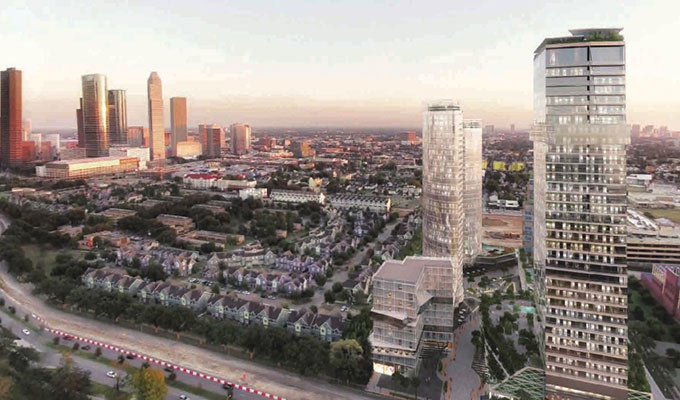
A look at what could be headed for the rest of that 10.5-acre Gillette St. former city park-slash-brownfield property comes from Tianqing Group, the Chinese firm involved with DC Partners’ recently announced mixed-use development at the site (to be funded via the EB-5 investment-for-greencards program). The northern 6 acres of the property (which at various points in its storied history has housed San Felipe Park, a SWAT substation, and the Gillette St. garbage incinerator) were sold to a then-unnamed investor last year, and DC Partners snagged the land in May.
The view above, displayed on Tianqing’s description page for the project, shows 3 highrises and 2 midrises in place at the edge of Fourth Ward, with the Downtown skyline visible in the distance to the right. Another of the renderings includes slightly clipped logo marks from both DC Partners and architecture firm Gensler; that rendering (below) provides a closer look at the towers from the west, as well as some green rooftop terraces:
ESPERSON, PENNZOIL, 712 MAIN TUNNELS TO REOPEN NEXT THURSDAY AROUND STALLED SPROUT OF CAPITOL TOWER 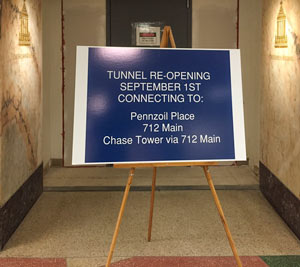 From the depths of the Esperson building, a reader sends a fresh shot of a sign announcing that tunnel connections from the building to nearby 712 Main and Pennzoil Place will be open again late next week. The phrasing implies that the connections beneath the site of Skanska’s planned-for-maybe-later Capitol Tower may not all be open by that time, but the Chase Tower (which itself connects to the lawsuit-embroiled former Houston Chronicle spot) will at least be accessible via a 712 Main detour. The tunnels beneath the former home of the previously-blown-away Houston Club building have been closed since 2014 as Skanska poured a tower foundation and built a parking garage; the company said earlier this year that it won’t be moving forward with the rest of the Capitol Tower until the market looks perkier. [Previously on Swamplot] Photo: ThaChadwick
From the depths of the Esperson building, a reader sends a fresh shot of a sign announcing that tunnel connections from the building to nearby 712 Main and Pennzoil Place will be open again late next week. The phrasing implies that the connections beneath the site of Skanska’s planned-for-maybe-later Capitol Tower may not all be open by that time, but the Chase Tower (which itself connects to the lawsuit-embroiled former Houston Chronicle spot) will at least be accessible via a 712 Main detour. The tunnels beneath the former home of the previously-blown-away Houston Club building have been closed since 2014 as Skanska poured a tower foundation and built a parking garage; the company said earlier this year that it won’t be moving forward with the rest of the Capitol Tower until the market looks perkier. [Previously on Swamplot] Photo: ThaChadwick
A PORTRAIT OF THE SLEEPY WORK LIFE OF THE MATTRESS SALESPERSON 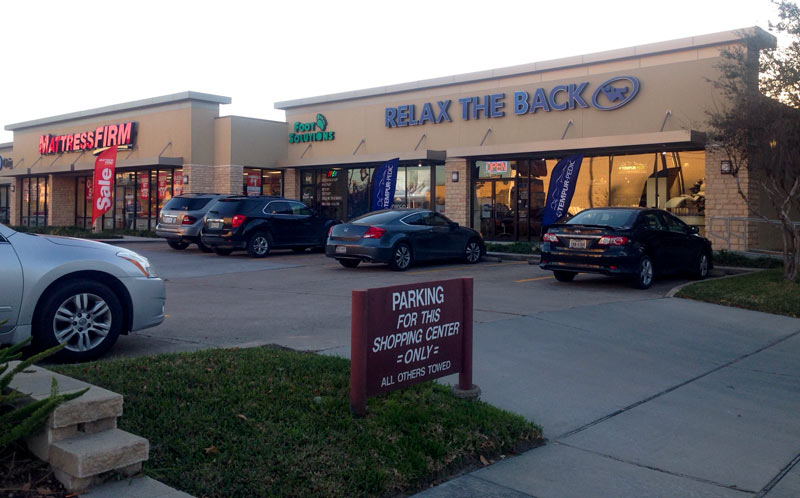 James Haynes takes a look this afternoon at the other side of the mattress retail expansion equation that has led to the 9-stores-in-11-blocks Rice Village mattress district and other high-mattress-density landscapes around Houston: the salespeople who may work a full 10-hour shift alone with no customers. While employees can spend part of that time on tasks like cleaning, inventory, advertising, or sharpening their mattress expertise,  Haynes writes that its still usually the case that “Houston’s mattress salesforce spend hours upon hours with nothing to do but wait for customers to appear. At the Urban Mattress store on Kirby, [part time mattress salesman Rick Goulding runs a contracting business — on the three days of the week when he’s not at the mattress store, he makes site visits. Then, during the quiet hours at the store, he works on inspection reports, writes descriptions for photos and sends e-mails. Without anything to do, he says, the job can put many store managers to sleep. Literally. ‘One of the first weekends I was here by myself… there was one bed I really liked, and I was lying on there, not much happening,’ Goulding remembers. ‘I laid back there and was almost asleep when the front door opened.’” [Houston Chronicle; previously on Swamplot] Photo of mattress stores on Kirby Dr.: Swamplot inbox
James Haynes takes a look this afternoon at the other side of the mattress retail expansion equation that has led to the 9-stores-in-11-blocks Rice Village mattress district and other high-mattress-density landscapes around Houston: the salespeople who may work a full 10-hour shift alone with no customers. While employees can spend part of that time on tasks like cleaning, inventory, advertising, or sharpening their mattress expertise,  Haynes writes that its still usually the case that “Houston’s mattress salesforce spend hours upon hours with nothing to do but wait for customers to appear. At the Urban Mattress store on Kirby, [part time mattress salesman Rick Goulding runs a contracting business — on the three days of the week when he’s not at the mattress store, he makes site visits. Then, during the quiet hours at the store, he works on inspection reports, writes descriptions for photos and sends e-mails. Without anything to do, he says, the job can put many store managers to sleep. Literally. ‘One of the first weekends I was here by myself… there was one bed I really liked, and I was lying on there, not much happening,’ Goulding remembers. ‘I laid back there and was almost asleep when the front door opened.’” [Houston Chronicle; previously on Swamplot] Photo of mattress stores on Kirby Dr.: Swamplot inbox
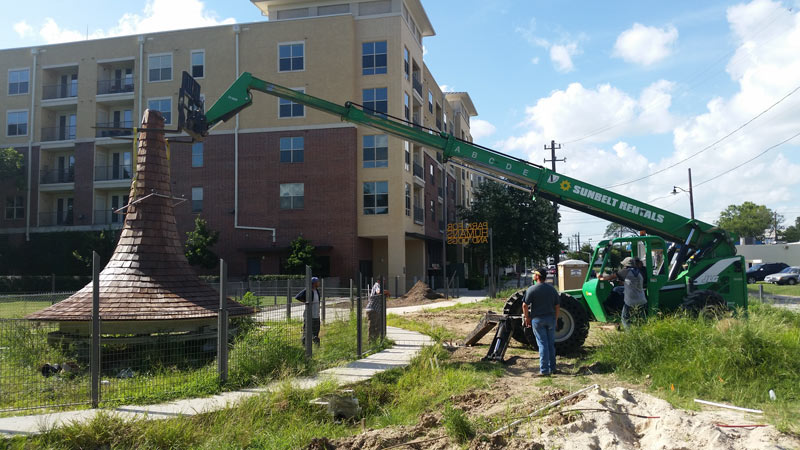
 If the top of that pointy gazebo currently camped out at the about-to-open Park for Humans and Dogs by Glenwood Cemetery looks familiar, it’s because it’s been lurking around the Houston landscape for the last 115 years or so. This morning Susie Tommaney inventories the history and internet lore surrounding the house at 2201 Fannin St., from which a cupola nicknamed the Witch’s Hat was plucked just before the home’s 1997 demolition. “Not many people realize that the cupola was saved,” TIRZ 13 chair Claude Anello tells Swamplot, sending along the photo above of the hat’s installation, as well as his account of the hat’s rediscovery, reshaping, and ground-up career-building:
If the top of that pointy gazebo currently camped out at the about-to-open Park for Humans and Dogs by Glenwood Cemetery looks familiar, it’s because it’s been lurking around the Houston landscape for the last 115 years or so. This morning Susie Tommaney inventories the history and internet lore surrounding the house at 2201 Fannin St., from which a cupola nicknamed the Witch’s Hat was plucked just before the home’s 1997 demolition. “Not many people realize that the cupola was saved,” TIRZ 13 chair Claude Anello tells Swamplot, sending along the photo above of the hat’s installation, as well as his account of the hat’s rediscovery, reshaping, and ground-up career-building:
“I got a call a few years ago from Carl Detering, who had stored it in his outdoor storage yard at Detering’s on Washington. He was selling the property and told me that someone needed to get it or he would be forced to throw it in the dumpster. When I went to look at it, it had basically melted, [and] a tree had grown up through the middle of it (removed prior to photos) . . . Several people told us that it was beyond repair, but we dismantled it, had it reconstructed, and designed the park around it. It sat on the ground for a couple of years while we dealt with issues related to park design and permitting.”
Here’s a few tree-free glamour shots of the Hat prior to those reconstructive procedures, circa late 2013:
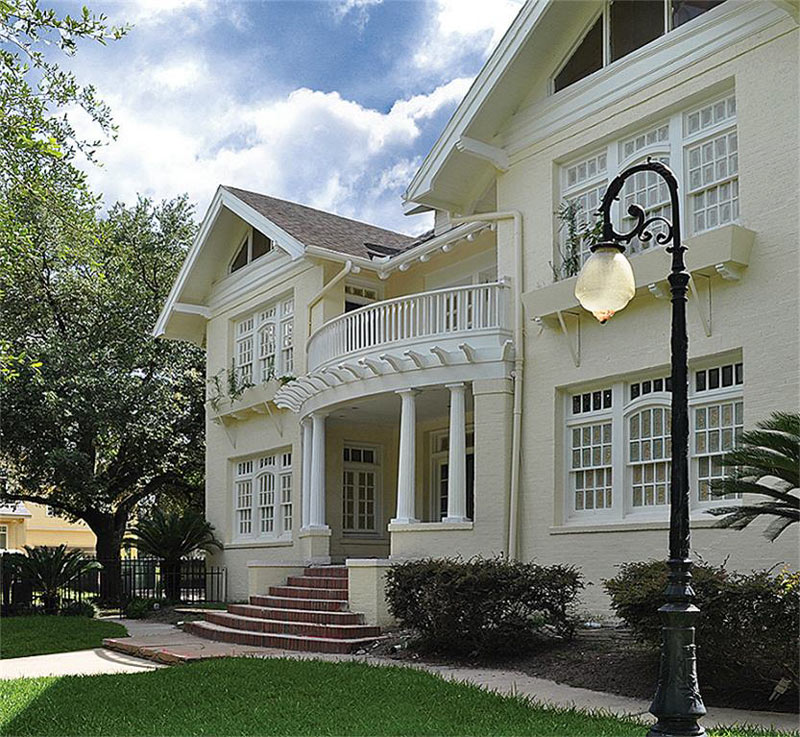
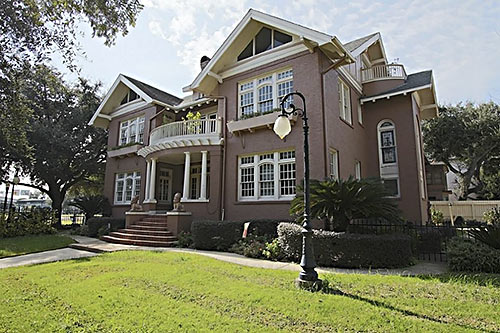 That Burlington St. mansion nestled in along the 527 Spur leading from Downtown to 59 is back on the market this week, though the listing implies that the interior redo and whitewashing is still in progress. The house, built between 1897 and 1908 depending on who you ask, went up for sale in the Westmoreland Historic District early last year for $1.8 million. The current owners bought the property that summer for $880,000 and quickly sent an application to the city’s history folks asking for approval to move some doors and windows around, as well as to add a deck out back and a balcony outside the existing second-story doors to nowhere in the master bedroom. (The bricks, already painted brown, appear to have been painted white instead, as has most of the interior.)
That Burlington St. mansion nestled in along the 527 Spur leading from Downtown to 59 is back on the market this week, though the listing implies that the interior redo and whitewashing is still in progress. The house, built between 1897 and 1908 depending on who you ask, went up for sale in the Westmoreland Historic District early last year for $1.8 million. The current owners bought the property that summer for $880,000 and quickly sent an application to the city’s history folks asking for approval to move some doors and windows around, as well as to add a deck out back and a balcony outside the existing second-story doors to nowhere in the master bedroom. (The bricks, already painted brown, appear to have been painted white instead, as has most of the interior.)
The property is now listed at a smidge under $2.4 million. Not pictured or mentioned in the new listing is the 3-post freeway billboard previously seen sunning itself by the pool on the northern end of the front yard, shown below as it appeared in the old listing: